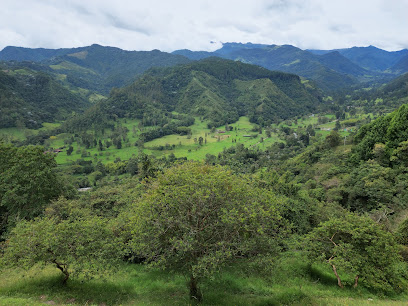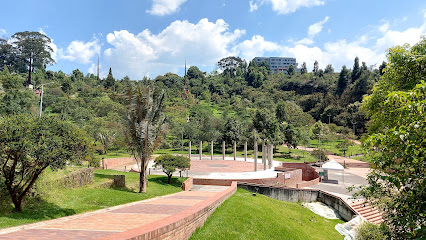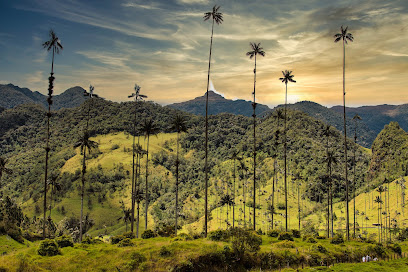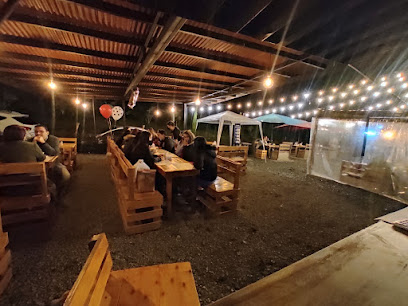
Exploring Los Nevados National Natural Park: Colombia's High-Altitude Wonderland
Discover Los Nevados National Natural Park: Colombia's high-altitude haven with snow-capped peaks, diverse ecosystems, and rich cultural heritage.
Los Nevados National Natural Park in Colombia is a striking landscape of snow-capped peaks, glacial lakes, and diverse ecosystems. Located in the heart of the Colombian Andes, it stretches across several departments including Caldas, Risaralda, Quindío, and Tolima. The park's centerpiece is the Nevado del Ruiz volcano, which rises to an impressive 5,321 meters above sea level, offering breathtaking views and a unique high-altitude environment. The park is home to a variety of flora and fauna, some of which are endemic to the region. Visitors can explore the páramo ecosystem, characterized by its unique vegetation and fog-covered landscapes. Birdwatchers will be delighted by the presence of over 200 bird species, including the Andean condor and the colorful hummingbird. The park also provides opportunities for hiking, with trails that lead through lush forests, past shimmering lakes, and up to the snowy summits. Los Nevados National Natural Park is not just about natural beauty; it also has a rich cultural heritage. The local communities, including indigenous groups, have lived in harmony with the land for centuries. Tourists can learn about their traditions and way of life, adding a cultural dimension to their visit. Whether you're an avid hiker, a nature lover, or a culture enthusiast, Los Nevados National Natural Park offers a memorable experience in one of Colombia's most stunning natural settings.
Local tips in Los Nevados National Natural Park
- Altitude Awareness: Adjust to high altitudes gradually to avoid altitude sickness.
- Weather Preparedness: Bring layered clothing as weather can vary dramatically.
- Guided Tours: Consider hiring a local guide for a safer and more informative experience.
- Permits: Check if you need any permits for trekking or visiting certain areas.
- Local Communities: Respect local customs and traditions; buying local crafts supports the community.
Exploring Los Nevados National Natural Park: Colombia's High-Altitude Wonderland
Los Nevados National Natural Park in Colombia is a striking landscape of snow-capped peaks, glacial lakes, and diverse ecosystems. Located in the heart of the Colombian Andes, it stretches across several departments including Caldas, Risaralda, Quindío, and Tolima. The park's centerpiece is the Nevado del Ruiz volcano, which rises to an impressive 5,321 meters above sea level, offering breathtaking views and a unique high-altitude environment. The park is home to a variety of flora and fauna, some of which are endemic to the region. Visitors can explore the páramo ecosystem, characterized by its unique vegetation and fog-covered landscapes. Birdwatchers will be delighted by the presence of over 200 bird species, including the Andean condor and the colorful hummingbird. The park also provides opportunities for hiking, with trails that lead through lush forests, past shimmering lakes, and up to the snowy summits. Los Nevados National Natural Park is not just about natural beauty; it also has a rich cultural heritage. The local communities, including indigenous groups, have lived in harmony with the land for centuries. Tourists can learn about their traditions and way of life, adding a cultural dimension to their visit. Whether you're an avid hiker, a nature lover, or a culture enthusiast, Los Nevados National Natural Park offers a memorable experience in one of Colombia's most stunning natural settings.
When is the best time to go to Los Nevados National Natural Park?
Iconic landmarks you can’t miss
Los Nevados National Park
Discover the breathtaking beauty and adventure of Los Nevados National Park, a stunning national park in Colombia with diverse ecosystems and hiking trails.

Natural Los Nevados - Zona De Ingreso Al Nevado Del Ruiz National Park
Explore the stunning beauty of Los Nevados National Park, a haven of biodiversity and adventure in Colombia's breathtaking landscapes.

Unmissable attractions to see
Parque del Café
Experience the magic of coffee and adventure at Parque del Café, a unique amusement park in Colombia's picturesque Quindío region.

Panaca
Explore Panaca, Colombia's premier theme park, where nature, agriculture, and adventure come together in a thrilling family experience.

Mirador de Salento
Discover stunning panoramic views of Colombia's lush Quindio region at Mirador de Salento, a perfect spot for nature lovers and photographers alike.

Parque Sucre
Discover the tranquility and beauty of Parque Sucre, a lush green park in Armenia, Quindio, perfect for relaxation and exploration amidst nature.

Vida Park
Experience the tranquility and beauty of Vida Park, a lush oasis in Armenia where nature thrives and families create lasting memories.

Chipre Tower
Discover the breathtaking views and cultural richness at Chipre Tower, an iconic observation deck in Manizales, Colombia's Coffee Triangle.

Bosque Popular El Prado
Experience the natural beauty and tranquility of Bosque Popular El Prado, a stunning city park perfect for hiking and relaxation in Manizales.

El Bosque de Las Palmas
Explore El Bosque de Las Palmas: Home to Colombia's iconic wax palms and a stunning national park filled with breathtaking landscapes and rich biodiversity.

Parque Mirador de los Nevados
Experience the natural beauty of Bogotá at Parque Mirador de los Nevados, an urban park offering stunning views and serene landscapes perfect for relaxation.

Parque Los Arrieros
Explore the vibrant Parque Los Arrieros, a cultural amusement park in Quindío, Colombia, offering thrilling rides and local traditions for unforgettable family fun.

Parque del Machete
Explore Parque del Machete, a vibrant oasis in Santa Rosa de Cabal featuring shops, eateries, and lush greenery for a perfect day out.

Malecón Cameguadua
Discover the tranquility and cultural richness of Malecón Cameguadua in Chinchiná, a scenic waterfront destination for unforgettable experiences.

House Of The Viceroy
Discover the House of the Viceroy in Cartago, a historic Colombian gem showcasing colonial architecture and rich cultural heritage.

Calle Real
Discover the vibrant charm of Calle Real in Salento, Colombia, where colorful architecture meets rich artisan culture and stunning mountain views.

Salto De Versalles, Guaduas
Experience the breathtaking beauty of Salto De Versalles, a stunning waterfall nestled in the lush landscapes of Guaduas, Cundinamarca, Colombia.

Essential places to dine
Los Nevados National Park
Discover the breathtaking beauty of Los Nevados National Park in Colombia – a paradise for hikers and nature enthusiasts with stunning landscapes.

Cafetería Y Restaurante El Nevado
Discover authentic Antioquian flavors at Cafetería Y Restaurante El Nevado in Valdivia – a must-visit culinary experience.

Markets, malls and hidden boutiques
Parque Nacional Natural Tayrona
Explore the biodiversity and stunning beaches of Parque Nacional Natural Tayrona, Colombia's treasure for nature lovers and adventure seekers.

Cocora Valley
Explore the lush landscapes and iconic wax palm trees of Cocora Valley, a breathtaking national park in Colombia's Quindío region.

Forest of the Palms
Explore the breathtaking Forest of the Palms in Salento, Quindio, a national park with majestic wax palms and stunning nature trails.

Los Nevados National Park
Discover the breathtaking landscapes and diverse ecosystems of Los Nevados National Park, a paradise for hikers and nature lovers in Colombia's Andes.

Cocora Valley Trail
Explore the breathtaking Cocora Valley Trail in Quindio, Colombia, home to the world's tallest wax palm trees and stunning Andean landscapes.

Parque Nacional Natural El Cocuy
Discover the natural beauty of Parque Nacional Natural El Cocuy, a stunning national park in Colombia, perfect for hiking and eco-tourism.

Hacienda Venecia Coffee Farm Experience
Discover the rich flavors and heritage of Colombian coffee at Hacienda Venecia, where every sip tells a story amidst breathtaking landscapes.

Combeima Canyon
Explore the breathtaking landscapes of Combeima Canyon in Tolima, Colombia, where nature and adventure come together in stunning harmony.

Parque Nacional Natural Macuira
Explore the stunning landscapes and rich culture of Parque Nacional Natural Macuira, a true gem in Colombia's La Guajira region.

Paramo Trek
Experience the breathtaking landscapes and rich culture of Salento with Paramo Trek, your gateway to adventure in Colombia's Quindío region.

Natural Los Nevados - Zona De Ingreso Al Nevado Del Ruiz National Park
Discover the breathtaking beauty and rich biodiversity of Natural Los Nevados, the gateway to Nevado Del Ruiz National Park in Colombia.

Reserva Ecologica Rio Blanco
Explore the serene beauty of Reserva Ecologica Rio Blanco, a nature preserve in Caldas, Colombia, perfect for hiking, birdwatching, and experiencing biodiversity.

Kasaguadua
Immerse in the breathtaking beauty of Kasaguadua Natural Reserve, a hidden paradise offering unique accommodations and vibrant ecosystems in Colombia.

Tatama National Park
Explore the breathtaking landscapes and rich biodiversity of Tatama National Park, a must-visit destination for nature lovers in Colombia.

Nevado Del Tolima
Explore the stunning beauty and diverse ecosystems of Nevado Del Tolima, a majestic national park in Colombia's Tolima region.

Essential bars & hidden hideouts
Wribs
Experience the best of American cuisine at Wribs in Manizales, featuring delicious ribs, burgers, and a lively atmosphere perfect for every occasion.

Bonanza Piqueteadero Bar
Discover the flavors of Colombia at Bonanza Piqueteadero Bar, where grilled delicacies and vibrant ambiance await in Santa Rosa de Cabal.

Sabor en Leña Restaurante Bar
Experience the rich flavors of Colombian cuisine at Sabor en Leña, where grilled specialties meet a warm and inviting atmosphere in Villamaría.

El Tejadito De Salento
Discover El Tejadito De Salento, where exceptional coffee and local beverages meet a cozy atmosphere in the heart of Colombia.

Bistro Sibarita
Discover the vibrant flavors of Colombia at Bistro Sibarita, a top gastropub in Santa Rosa de Cabal, blending local ingredients with modern culinary artistry.

Oniria Rock Pub
Discover the vibrant nightlife at Oniria Rock Pub, a local favorite in Santa Rosa de Cabal, offering live music, great drinks, and an electric atmosphere.

El Escondite De Hernando
Experience the vibrant atmosphere and unique local flavors at El Escondite De Hernando, a must-visit bar in Santa Rosa de Cabal, Colombia.

Cantaritos
Experience the vibrant nightlife of Santa Rosa de Cabal at Cantaritos, where great drinks and an inviting atmosphere await.

Marino Nieto
Discover Marino Nieto in Santa Rosa de Cabal, a vibrant bar offering local drinks, lively music, and a taste of Colombian culture.

Orloff Cocktails
Discover the art of mixology at Orloff Cocktails, the premier cocktail bar in Santa Rosa de Cabal, where every drink tells a story.

Vamos pa'Viejos Gastro-bar
Experience the vibrant nightlife and local flavors at Vamos pa'Viejos Gastro-bar in Santa Rosa de Cabal, where culture and cuisine come together.

Ibiza Sunset by Ibiza Shots
Discover the ultimate sunset bar experience in Santa Rosa de Cabal, where stunning views and refreshing drinks come together.

La vega
Experience the vibrant nightlife of Villamaría at La Vega, a bar that embodies the spirit of Colombian culture with lively music and a diverse drink menu.

Euforia Bar
Discover Euforia Bar in Murillo, Tolima – a cocktail haven blending local flavors and delightful mixology in a vibrant atmosphere.

Bar Castilla
Discover the vibrant atmosphere of Bar Castilla, a must-visit bar in Santa Rosa de Cabal, offering a delightful selection of drinks and live music.

Local Phrases about Los Nevados National Natural Park
-
- HelloHola
[oh-la] - GoodbyeAdiós
[ah-dee-ohs] - YesSí
[see] - NoNo
[no] - Please/You're welcomePor favor/De nada
[por fah-vor/de nah-dah] - Thank youGracias
[grah-see-ahs] - Excuse me/SorryPerdón/Lo siento
[pair-dohn/loh see-en-toh] - How are you?¿Cómo estás?
[koh-moh ehs-tahs] - Fine. And you?Bien. ¿Y tú?
[bee-ehn. ee too] - Do you speak English?¿Hablas inglés?
[ah-blahs een-glays] - I don't understandNo entiendo
[noh ehn-tee-ehn-doh]
- HelloHola
-
- I'd like to see the menu, pleaseMe gustaría ver el menú, por favor
[meh goo-stah-ree-ah behr ehl meh-noo, por fah-vor] - I don't eat meatNo como carne
[noh koh-moh kahr-neh] - Cheers!¡Salud!
[sah-lood] - I would like to pay, pleaseMe gustaría pagar, por favor
[meh goo-stah-ree-ah pah-gar, por fah-vor]
- I'd like to see the menu, pleaseMe gustaría ver el menú, por favor
-
- Help!¡Ayuda!
[ah-yoo-dah] - Go away!¡Vete!
[veh-teh] - Call the Police!¡Llama a la Policía!
[yah-mah ah lah poh-lee-see-ah] - Call a doctor!¡Llama a un doctor!
[yah-mah ah oon dohk-tohr] - I'm lostEstoy perdido
[ehs-toy pair-dee-doh] - I'm illEstoy enfermo
[ehs-toy ehn-fehr-moh]
- Help!¡Ayuda!
-
- I'd like to buy...Me gustaría comprar...
[meh goo-stah-ree-ah kohm-prahr] - I'm just lookingSolo estoy mirando
[soh-loh ehs-toy mee-rahn-doh] - How much is it?¿Cuánto cuesta?
[kwan-toh kwehs-tah] - That's too expensiveEso es muy caro
[eh-soh ehs mwee kah-roh] - Can you lower the price?¿Puedes bajar el precio?
[pweh-dehs bah-har ehl pree-seh-oh]
- I'd like to buy...Me gustaría comprar...
-
- What time is it?¿Qué hora es?
[keh oh-rah ehs] - It's one o'clockEs la una
[ehs lah oo-nah] - Half past (10)Media hora (10)
[meh-dee-ah oh-rah (dheez-eez)] - MorningMañana
[mah-nyah-nah] - AfternoonTarde
[tahr-deh] - EveningNoche
[noh-cheh] - YesterdayAyer
[ah-yehr] - TodayHoy
[oy] - TomorrowMañana
[mah-nyah-nah] - 1Uno
[oo-noh] - 2Dos
[dohs] - 3Tres
[trehs] - 4Cuatro
[kwah-troh] - 5Cinco
[seeng-koh] - 6Seis
[sehs] - 7Siete
[see-eh-teh] - 8Ocho
[oh-choh] - 9Nueve
[nweh-veh] - 10Diez
[dyehs]
- What time is it?¿Qué hora es?
-
- Where's a/the...?¿Dónde está...?
[dohn-deh ehs-tah] - What's the address?¿Cuál es la dirección?
[kwal ehs lah dee-rehk-syohn] - Can you show me (on the map)?¿Puedes mostrarme (en el mapa)?
[pweh-dehs mohs-trar-meh (ehn ehl mah-pah)] - When's the next (bus)?¿Cuándo es el próximo (autobús)?
[kwan-doh ehs ehl proh-ksee-moh (ow-toh-booos)] - A ticket (to ....)Un boleto (a ....)
[oon boh-leh-toh (ah)]
- Where's a/the...?¿Dónde está...?
History of Los Nevados National Natural Park
-
Long before the arrival of Europeans, the area now known as Los Nevados National Natural Park was inhabited by indigenous groups such as the Quimbaya and Pijao. These peoples developed complex societies with rich cultural traditions, utilizing the diverse landscape for agriculture, hunting, and gathering. The high-altitude paramos provided unique flora and fauna that were integral to their way of life.
-
The Spanish conquest in the 16th century brought dramatic changes to the region. The indigenous populations were decimated by disease and conflict, and the Spanish began exploiting the land’s natural resources. The lush valleys and fertile slopes of the Andes were transformed into agricultural hubs, with the introduction of European crops and livestock. The colonial period also saw the establishment of small settlements and missionary outposts, which would later evolve into the towns surrounding the park.
-
The 19th century ushered in a significant transformation with the coffee boom. The rich volcanic soil around Los Nevados proved ideal for coffee cultivation, leading to economic prosperity and the growth of the coffee industry. The region became known as part of the 'Coffee Cultural Landscape,' a UNESCO World Heritage site. Coffee fincas (farms) and traditional methods of cultivation became deeply embedded in the local culture, shaping the landscape and community dynamics.
-
Los Nevados National Natural Park was officially established in 1974 to protect the unique ecosystems and diverse wildlife found in this part of the Colombian Andes. The park encompasses several volcanic peaks, including the Nevado del Ruiz, Nevado del Tolima, and Nevado de Santa Isabel, among others. The establishment of the park marked a significant effort to conserve the delicate paramo and cloud forest ecosystems, which are home to a variety of endemic species.
-
One of the most significant events in the park’s history is the eruption of the Nevado del Ruiz volcano on November 13, 1985. The eruption caused a massive lahar (volcanic mudflow) that devastated the town of Armero, leading to the loss of over 23,000 lives. This tragic event brought global attention to the dangers posed by Colombia’s active volcanoes and highlighted the need for improved disaster preparedness and monitoring systems.
-
Today, Los Nevados National Natural Park is a symbol of natural beauty and cultural heritage in Colombia. The park attracts tourists, hikers, and nature enthusiasts from around the world, who come to experience its dramatic landscapes and rich biodiversity. Local communities continue to maintain their traditions, with coffee cultivation and other agricultural practices remaining central to their way of life. The park also serves as a living laboratory for scientific research and environmental education, emphasizing the importance of conservation and sustainable tourism.
Los Nevados National Natural Park Essentials
-
Los Nevados National Natural Park is located in the central Andes of Colombia, straddling the departments of Caldas, Risaralda, Quindío, and Tolima. The nearest major cities are Manizales, Pereira, and Armenia. To get to the park, you can fly into any of these cities' airports: La Nubia Airport (MZL) in Manizales, Matecaña International Airport (PEI) in Pereira, or El Edén International Airport (AXM) in Armenia. From these cities, you can hire a taxi or take a bus to the park's entrances. Note that some park areas are accessible only by 4x4 vehicles or on foot.
-
Transportation within Los Nevados National Natural Park can be challenging due to its rugged terrain. Public buses and jeeps (known as 'Willys') operate from the nearby cities to the park entrances, but for exploring the park's interior, hiking is often required. Renting a 4x4 vehicle or joining a guided tour can offer more convenience and access to remote areas. Keep in mind that the roads can be rough and weather conditions can change rapidly.
-
The official currency in Colombia is the Colombian Peso (COP). While major hotels and some restaurants in nearby cities may accept credit cards, it is advisable to carry cash, especially when visiting remote areas of the park. ATMs are available in the nearby cities, but they are scarce within the park itself. Ensure you carry enough cash for entrance fees, local transportation, and any other expenses you might incur.
-
Los Nevados National Natural Park is generally safe for tourists, but it is essential to take standard precautions. Avoid hiking alone and always let someone know your itinerary. Be cautious of your surroundings in crowded places and keep an eye on your belongings. Some areas within the park can be hazardous due to weather conditions or altitude; always heed local advice and weather warnings. Crime rates targeting tourists are relatively low, but staying vigilant is always recommended.
-
In case of emergency, dial 123 for immediate assistance in Colombia. The nearest medical facilities are in the surrounding cities of Manizales, Pereira, and Armenia. It is strongly recommended to have travel insurance that covers medical emergencies, including high-altitude sickness. For minor health issues, carry a basic first-aid kit and any necessary medications. Park rangers can also provide assistance in case of emergencies.
-
Fashion: Do dress in layers and wear sturdy hiking boots, as the weather can change rapidly. Avoid wearing flashy jewelry or expensive accessories. Religion: Do respect local customs and indigenous traditions. Public Transport: Do be respectful to drivers and fellow passengers. Don’t eat or drink on public transport. Greetings: Do greet people with a friendly 'Hola' or 'Buenos días' and a handshake. Eating & Drinking: Do try local dishes and drinks, such as 'arepas' and 'aguapanela'. Don’t refuse food or drink offerings, as it can be considered impolite.
-
To experience Los Nevados National Natural Park like a local, consider visiting during the off-peak season for a more tranquil experience. Engage with local guides who can share in-depth knowledge about the park’s flora, fauna, and history. Make sure to try local delicacies at small eateries in the nearby towns. If you're up for an adventure, hike to the park's high-altitude lakes and volcanic craters for breathtaking views. Always carry a reusable water bottle and stay hydrated, especially at higher altitudes.
Nearby Cities to Los Nevados National Natural Park
-
Things To Do in Pereira
-
Things To Do in Ibagué
-
Things To Do in Armenia
-
Things To Do in Bogotá
-
Things To Do in Medellín
-
Things To Do in Cali
-
Things To Do in Villavicencio
-
Things To Do in Neiva
-
Things To Do in Tunja
-
Things To Do in Popayán
-
Things To Do in Pasto
-
Things To Do in Cúcuta
-
Things To Do in Sincelejo
-
Things To Do in Ibarra
-
Things To Do in Otavalo









